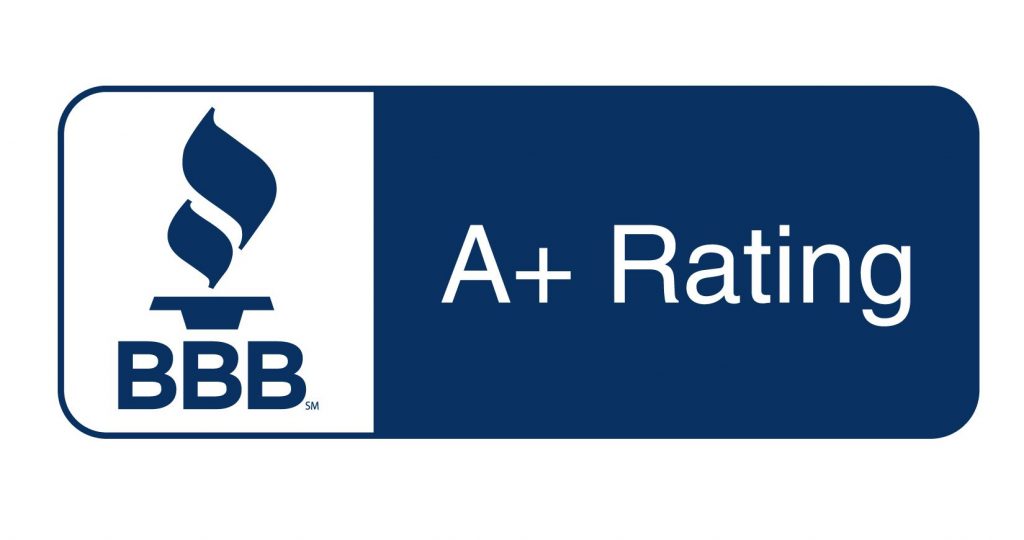Retirement is often seen as a time to relax, enjoy the fruits of all your hard work, and pursue your passions without the constraints of a full-time job. However, one of the first things you’ll have to tackle when you retire is Medicare. Did your shoulders just sag a little bit? Yep, we thought so. Navigating the complexities of Medicare and figuring out how it impacts your finances is a daunting task for everyone.
Luckily, you came to the right place! Today, we’re going to explore the unique concerns Medicare beneficiaries face, along with five strategies you can use to protect your finances and budget.
1. Understand Your Medicare Options
A key component of minimizing Medicare expenses is to be educated about the different coverage options available to you. This will allow you to make informed decisions when selecting the best plan for your healthcare needs and financial situation. You’ll need to dive into more research about how Medicare works, but we’ll give you a brief overview of the parts of Medicare here.
Original Medicare (Parts A and B)
Original Medicare consists of two parts. Part A provides your hospital or inpatient insurance – think of it as your room and board coverage for any hospital or skilled nursing facility stays. Part B offers medical or outpatient coverage. This includes a host of services like doctor visits, surgeries, lab tests, preventive care, and more.
Most people won’t pay a premium for Part A. As long as you (or your spouse) paid into Social Security for at least ten years, you’ll enjoy premium-free Part A. However, everyone does pay a premium for Part B. The Centers for Medicare and Medicaid Services (CMS) sets a standard premium each year, often increasing from one year to the next. While there is a standard premium, about 8% of beneficiaries pay a higher amount. The added premium is called IRMAA, the Income-Related Monthly Adjustment Amount. We’ll talk more about IRMAA later.
You’ll also have lots of out-of-pocket expenses under Original Medicare. Each part comes with a deductible, copayments, and coinsurance costs. In addition, there is no limit to those expenses.
For this reason, it’s seldom a good idea to rely on Parts A and B alone. Instead, we urge clients to add supplemental coverage.
Medicare Advantage (Part C)
Private insurance companies offer Medicare Advantage plans as a way to “replace” the coverage provided by Original Medicare. Instead of the federal Medicare program paying for your healthcare services, the private insurance carrier takes responsibility for your claims. Medicare Advantage plans must include all the basic benefits that Parts A and B do but also offer extra benefits in most cases.
One of the most attractive things about Medicare Advantage plans is they are offered at a low monthly premium. You can probably find multiple plans in your area that are as little as $0 per month. Keep in mind you’ll still be responsible for paying your Part B premium, and you’ll have
other costs to consider. Like Original Medicare, there are still deductibles, copays, and coinsurance amounts. However, the costs are often lower than what Original Medicare offers, and there is an annual limit on out-of-pocket spending.
Prescription Drug Coverage (Part D)
Medicare Part D includes stand-alone prescription plans offered by private carriers. You’ll need to enroll in a Part D plan unless you have a Medicare Advantage plan that includes prescription drug coverage. The only time we don’t recommend enrolling in Part D is if you have prescription coverage through the VA or TRICARE for Life.
Prescription plans vary in premium, depending on how much coverage you need and where you live. Generally speaking, the more medications you take and the more those medications cost, the higher your monthly premium. To give you an idea of cost, according to the Kaiser Family Foundation, the average premium for a Part D plan in 2023 is $43.
2. Appeal IRMAA or Apply for a Medicare Savings Program
The Income-Related Monthly Adjustment Amount (IRMAA) is an additional charge applied to certain high-income Medicare beneficiaries for both Part B and Part D premiums. The Social Security Administration (SSA) uses your adjusted gross income from two years prior to determine if you pay IRMAA and, if so, exactly how much you’ll pay. For example, your adjusted gross income in 2021 determines your IRMAA in 2023.
If you’re subject to IRMAA, it’s crucial to know how to appeal the adjustment if you experience a significant change in your financial situation. We often find that this is especially true for people who recently retired and no longer have the employment income they had while working.
Significant, life-altering events will qualify you to appeal your IRMAA. For example, retirement, the death of a spouse, divorce, the loss of income-producing property, or a reduction in work hours are all examples of qualifying events. To appeal IRMAA, you must complete Form SSA 44 and submit it to the SSA along with documentation supporting your claim. Successfully appealing IRMAA will result in significant savings in your Part B and Part D premiums.
Do you find yourself on the opposite side of this? Individuals with more limited incomes and resources can apply for a Medicare Savings Program (MSP) to get financial assistance with Medicare costs. These programs are run by your state Medicaid program and help pay for premiums, deductibles, coinsurance, and copays. The four programs include:
- Qualified Medicare Beneficiary (QMB) Program
- Specified Low-Income Medicare Beneficiary (SMLB) Program
- Qualifying Individual (QI) Program
- Qualified Disabled and Working Individuals (QDWI) Program
Each state sets specific limits on income and resources that will impact your eligibility to apply. Contact your state’s Medicaid office for more information about eligibility and the application procedure.
3. Explore Medigap and Medicare Advantage Plans
Another strategy for minimizing Medicare premiums and expenses is to consider supplemental insurance options like Medigap and Medicare Advantage. Both have pros and cons and are suited to different people and budgets.
Medigap: Predictable Expenses
Medigap plans, also known as Medicare Supplement insurance, are sold by private insurance companies and help pick up the costs that remain after Original Medicare pays its share. Several standardized plans are available, and the most popular options pick up all (or nearly all) of the leftover deductibles and out-of-pocket expenses you’d otherwise have to pay.
Of course, you’ll pay a premium for these plans. Premiums vary depending on which of the standardized plans you choose and personal factors such as your age, gender, and location. For example, the average cost for Plan G (the most popular option) ranges from $100 to $140 for new beneficiaries. Plus, you’ll need to enroll in a separate Part D plan and may want to consider another policy for dental, vision, and hearing care, which Medicare does not cover.
The upside of this extra premium is that you’ll have nearly no out-of-pocket costs. This makes Medigap plans the more predictable choice for those who want to know exactly how much they’ll need to budget for their healthcare expenses.
Medicare Advantage: Minimal Premiums
Your other option is to enroll in Medicare Advantage. As we mentioned earlier, these plans include all the benefits found in Original Medicare, plus some extras like prescription coverage, dental, vision, and hearing services. In essence, they offer an all-in-one alternative to traditional Medicare. Plans vary significantly from carrier to carrier and from one region to the next.
Beneficiaries who choose this option get more benefits at a meager (if not $0) premium. You’ll still have costs associated with services, but the lower monthly premium can put hundreds of dollars back into your budget, especially if you are relatively healthy and don’t require frequent trips to the doctor.
4. Conduct Annual Reviews of Your Coverage
Regularly reviewing your Medicare coverage is often overlooked as an impactful money-saving strategy, but ensuring your plan continues to meet your healthcare needs and budget is essential. Medicare offers a timeline to review and make changes to some of your Medicare plans.
Annual Election Period (AEP)
Beneficiaries enrolled in Part C or Part D plans should never ignore AEP. Since you’ve probably got at least one or the other, AEP applies to nearly every person enrolled in Medicare. It runs from October 15 through December 7 each year.
AEP is so important because Part C and Part D plans operate on annual contracts. Every year, they change their premiums, out-of-pocket costs, and benefits. So even if your plan is working well for you now, there could be changes the following year that could negatively impact your coverage and costs. AEP allows you to review the changes coming to your plan and gives you the opportunity to change your plan if you find another one that offers a better fit for you.
You can work with an independent insurance agent to review the plans in your area, or you can use the Plan Finder tool on Medicare.gov to do your own research. You cannot change your Part C or Part D plans outside of AEP, so mark your calendars now!
Shop for Medigap Rates
Unlike Part C and Part D plans, Medigap benefits never change. However, the premiums usually increase as you get older. Medigap plans do not have any open enrollment periods. Instead, you can shop for never coverage at any time of the year. The caveat is that in almost all states, you’ll need to be healthy enough to pass medical underwriting to change your plan. If you’ve been healthy for the last couple of years and don’t have any severe chronic conditions, you might be able to find a carrier that offers lower rates, thereby saving money every month.
5. Utilize Preventive Services, Wellness Programs, and Extra Benefits
Taking advantage of preventive services, wellness programs, and any extra benefits you might have is a great proactive strategy to minimize healthcare costs. By catching problems early – or preventing them altogether – you’ll be able to maintain your health, reduce the risk of costly medical issues, and squeeze every valuable penny from your plan.
Medicare covers a long list of preventive services at no cost to you. For example, you’ll have access to annual wellness visits, screenings for various health conditions, immunizations, and counseling. Some Medicare plans also include wellness programs like gym memberships, online fitness programs, or weight management resources. You may also be eligible for nutritional counseling. Utilizing these services will detect potential health issues early, allowing for timely intervention and reducing the likelihood of more expensive treatments in the future.
Lastly, if you have a Medicare Advantage plan, be sure you’re taking advantage of all those bells and whistles outlined in the plan’s summary of benefits. Every plan is different, but you likely have access to free gym memberships, transportation services, and a monthly over-the-counter allowance. Unfortunately, since these plans are complex, beneficiaries often forget to use the services they found attractive when enrolling.
By familiarizing yourself with these five strategies and actively managing your healthcare coverage, you can take control of your retirement finances and work towards a worry-free future. It’s important to remember that each individual’s situation is unique, and seeking professional guidance for personalized advice is invaluable in making the most informed decisions.
Ultimately, mastering Medicare and implementing these strategies will ensure you can fully enjoy your retirement, confident that your healthcare needs are met and your finances are protected. Call Carolina Senior Benefits today and make sure your’re prepared for your Medicare journey.





